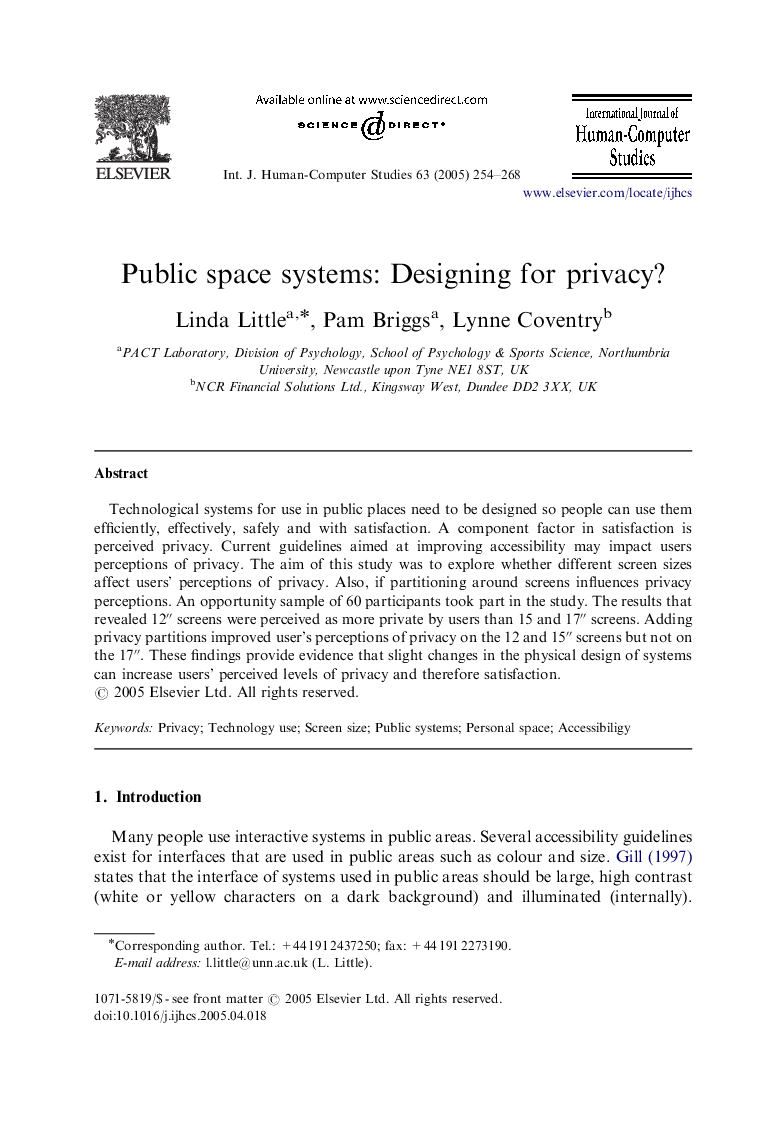| Article ID | Journal | Published Year | Pages | File Type |
|---|---|---|---|---|
| 9652495 | International Journal of Human-Computer Studies | 2005 | 15 Pages |
Abstract
Technological systems for use in public places need to be designed so people can use them efficiently, effectively, safely and with satisfaction. A component factor in satisfaction is perceived privacy. Current guidelines aimed at improving accessibility may impact users perceptions of privacy. The aim of this study was to explore whether different screen sizes affect users' perceptions of privacy. Also, if partitioning around screens influences privacy perceptions. An opportunity sample of 60 participants took part in the study. The results that revealed 12â³ screens were perceived as more private by users than 15 and 17â³ screens. Adding privacy partitions improved user's perceptions of privacy on the 12 and 15â³ screens but not on the 17â³. These findings provide evidence that slight changes in the physical design of systems can increase users' perceived levels of privacy and therefore satisfaction.
Related Topics
Physical Sciences and Engineering
Computer Science
Artificial Intelligence
Authors
Linda Little, Pam Briggs, Lynne Coventry,
